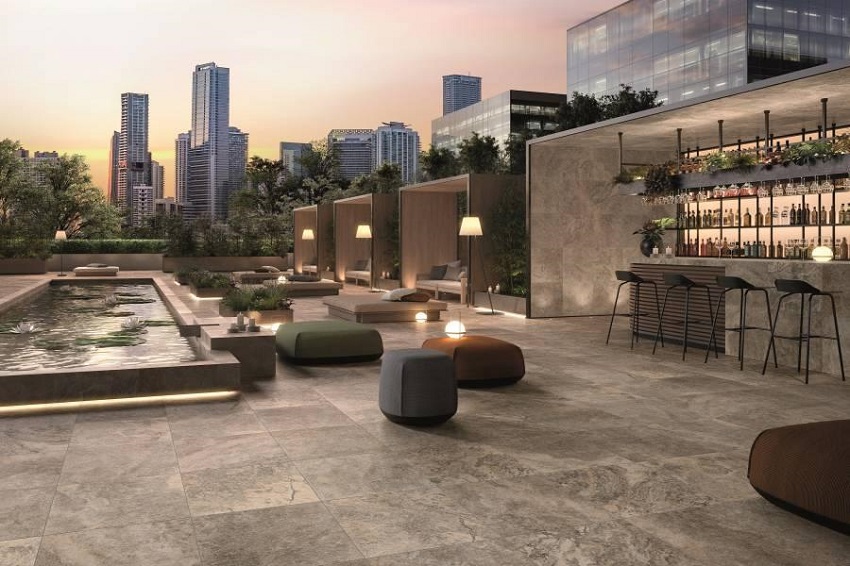
Travertine, a type of limestone formed by mineral deposits from hot springs, has been revered for its beauty and versatility throughout history. From ancient Roman architecture to modern-day interior design, travertine has stood the test of time as a luxurious building material. In this article, we will delve into the world of travertine, exploring its origins, characteristics, applications, and why it continues to be a symbol of luxury in various settings. The content is brought to you by Decoracaos.com.
What Makes Travertine Luxurious?
Travertine’s luxurious appeal lies in its unique characteristics that set it apart from other natural stones. One of the most captivating features of travertine is its natural variation in color and texture. Each piece of travertine is distinct, showcasing its individuality and adding an element of exclusivity to any space it graces.
The Allure of Natural Patterns
Travertine marble‘s formation process results in mesmerizing patterns, making it resemble a work of art crafted by nature itself. These patterns, ranging from subtle veining to bold swirls, can transform a simple surface into an extraordinary centerpiece, elevating the overall aesthetic of any area.
Timeless Elegance for Various Applications
From flooring to countertops and wall claddings, travertine is a versatile stone that seamlessly fits into various applications. Whether it’s used in luxurious hotels, upscale residences, or spa-inspired bathrooms, travertine exudes a timeless elegance that never goes out of style.
The Artistry of Finishes
Travertine offers an array of finishes, allowing designers and homeowners to customize the look and feel of the stone. The most popular finishes include polished, honed, brushed, and tumbled. A polished finish imparts a glossy, reflective surface, while a honed finish provides a smooth, matte look. Brushed and tumbled finishes create a textured appearance, adding a rustic charm to the stone.
Incorporating Travertine in Interior Design
Travertine’s versatility makes it a sought-after material for interior designers. It effortlessly complements various styles, from contemporary to traditional. In modern settings, travertine’s neutral hues and clean lines add a touch of sophistication, while in classical interiors, it imparts a sense of grandeur and opulence.
The Eco-Friendly Choice
As an environmentally friendly stone, travertine is a preferred option for those who prioritize sustainability. Since it is a natural material, it has a lower carbon footprint compared to synthetic alternatives. Moreover, travertine is a durable stone, requiring minimal maintenance, which further contributes to its eco-friendly credentials.
Travertine for Outdoor Living Spaces
Travertine’s charm extends beyond indoor applications; it is equally enchanting in outdoor living spaces. Whether used for patios, pool decks, or garden pathways, travertine’s ability to stay cool under the sun makes it comfortable for barefoot walking. Its slip-resistant surface ensures safety, while its ability to withstand varying weather conditions ensures longevity.
The Investment Value
Investing in travertine adds long-term value to any property. Its durability and timelessness ensure that it remains an enduring asset. Additionally, the unique allure of travertine often enhances the property’s resale value, making it an excellent investment for homeowners and property developers alike.
Maintenance and Care Tips
While travertine is a durable stone, proper maintenance is essential to preserve its beauty. Regularly cleaning the surface with a pH-balanced, non-abrasive cleaner is recommended. Avoid using acidic or abrasive substances that may damage the stone’s surface. Periodic sealing helps protect the stone from stains and moisture infiltration.
Conclusion
Travertine undeniably holds a luxurious aura that captivates anyone who beholds it. Its natural patterns, unique finishes, and versatility make it a top choice for interior and exterior design. Beyond its beauty, the eco-friendly aspect and investment value further solidify its status as a premium building material. As a timeless stone that blends artistry with practicality, travertine continues to reign as a symbol of luxury in the world of architecture and design.
FAQs
Is travertine suitable for high-traffic areas?
Yes, travertine’s durability and resistance to wear make it suitable for high-traffic areas.
Can travertine be used in cold climates?
Yes, travertine’s ability to withstand extreme temperatures makes it suitable for cold climates.
How often should I seal my travertine surface?
It is generally recommended to seal travertine every 1 to 2 years, depending on the level of usage.
Does travertine require specialized cleaning products?
Travertine can be cleaned with a pH-balanced, non-abrasive cleaner, which is readily available in the market.
Can I use travertine in a contemporary-style home?
Absolutely! Travertine’s neutral colors and clean lines complement contemporary interiors beautifully.

